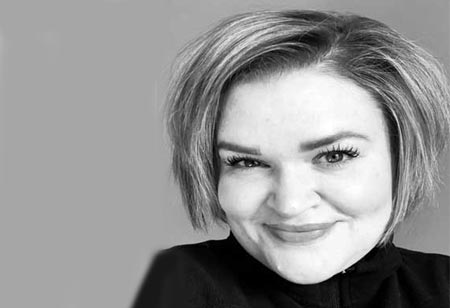Thank you for Subscribing to Healthcare Business Review Weekly Brief

Upskilling Medical Education Administrators
Healthcare Business Review
Before perpetually involving herself in the childcare industry, Corinne Wilcox-Schowalterm started her career as a makeup artist at Bobby Brown, Marshall Field’s in 2004. Upon serving brief tenures in multiple organizations, Wilcox-Schowalterm joined Children’s Minnesota. After 15 bright years at the company, she plans to improve healthcare services and operations through a customized approach to continuing medical education (CME).
As learning is a continuous process for progress, its prevalence is important beyond academic institutions to educate professionals. This is also true in the medical industry where updated skills can save lives. This article highlights Corinne Wilcox-Schowalterm’s efforts in addressing the varied capabilities, backgrounds and preferences of medical administrators to enhance operations and initiate professional growth.
“By engaging in CE, staff stay current in the field, learn how to address everyday challenges and network and share best practices.”
Different origins but one goal
In my experience, the highly skilled professionals who administer the field of medical education come from diverse backgrounds and training – many with no knowledge of or previous intention of joining it. I suspect there are more than just me who have found themselves doing this work nearly by accident (or maybe luck.) In my over fifteen years in medical education, I have met people who entered the field fresh from undergrad, having had mid-career transitions into it, and those who entered it after going through medical training and discovered a love for it. I have had the pleasure of working with coordinators and education managers with backgrounds in public health, sales, library science, nursing, finance and even zoology.
No degree or field of study directs one into medical education, despite the entire field being predicated on the particular educational needs of physicians and physicians-in-training. Once on the job, there may be some basic training that mainly depends on the institution and any co-administrators to explain the unfamiliar nuances of graduate medical education (GME) and CME. It is very much an on-the-job learning experience for most of us.
A critical piece for the success of medical education programs
The benefits of continuing education (CE) are obvious and observable – we measure outcomes before and after education designed for the healthcare team and see measurable improvements in competence or performance. Naturally, we conclude that training improves outcomes. Why would it not be so for the medical education professional? The competence and performance of these team members in designing education and managing accreditation impacts the team members who drive outcomes in patient care! Thus, staying up-to-date and as skilled as possible is vital to the continued best-in-class education and training for healthcare teams.
Engaging in CE presents opportunities for administrators to increase knowledge and skill, with relevant subject matter like adult learning theory for CME, or finance concepts for the GME professional. By engaging in CE, staff stay current in the field, learn how to address everyday challenges and network and share best practices.At times, an administrator may wish to obtain a particular professional certification that many require CE to achieve and maintain. Finally, for those with skill or knowledge gaps, upskilling or reskilling through targeted CE or training can mean performance improvement and expanded potential for promotion or increasing agility within their career.
Meeting the diverse requirements of trainees
Continuing professional education should be a priority for any medical education team seeking to drive their performance and outcomes. Despite this, it can be challenging. Bearing in mind the diversity of thought, experience and perspective that makes up the workforce of medical education administration, as a leader I have found it immensely challenging to right-size professional development and education for my team. They have different levels of knowledge on the subject matter at hand and their backgrounds may have prepared them differently for the role.
In addition, there is not much out there today in subject-matter training for GME or CME providers apart from annual conferences of their respective accrediting bodies. Those can be useful, but at times, assume a baseline understanding that may or may not be present, or can be overly generalized so much as to be unhelpful. They also require significant financial support to attend, including travel and registration costs. A lower-resourced team may be unable to upskill, simply due to financial burden.
A hybrid and personalized strategy
I have taken a mixed approach through individual development planning, to create a plan with each of my staff members that includes what appeals to them, their aptitudes, their abilities, and what will help them add value to our team and program, inside the budget we have. We piece together a plan to obtain CE relevant to the field as well as general professional development, leveraging free and low-cost options as well as corporate tuition reimbursement and a minimal operating budget. The individual development plan (IDP) process is separate from performance appraisal and goal setting, but complementary; it’s viewed as an adjunct strategy to enable obtaining goals.
This two-way conversation and mutual commitment to their development is a tactic that's part of engagement and retention as well – it ensures that the team feels supported, resourced and recognized as valuable professionals. Working alongside my team, I have discovered things about them that have enhanced our personal and professional relationships while enjoying my maturation as a leader and coach. Recognizing the differing needs and skills of individuals through intentional, customized development planning and building administrative CE into the growth plan of a medical education program will likely prove a worthy investment.









